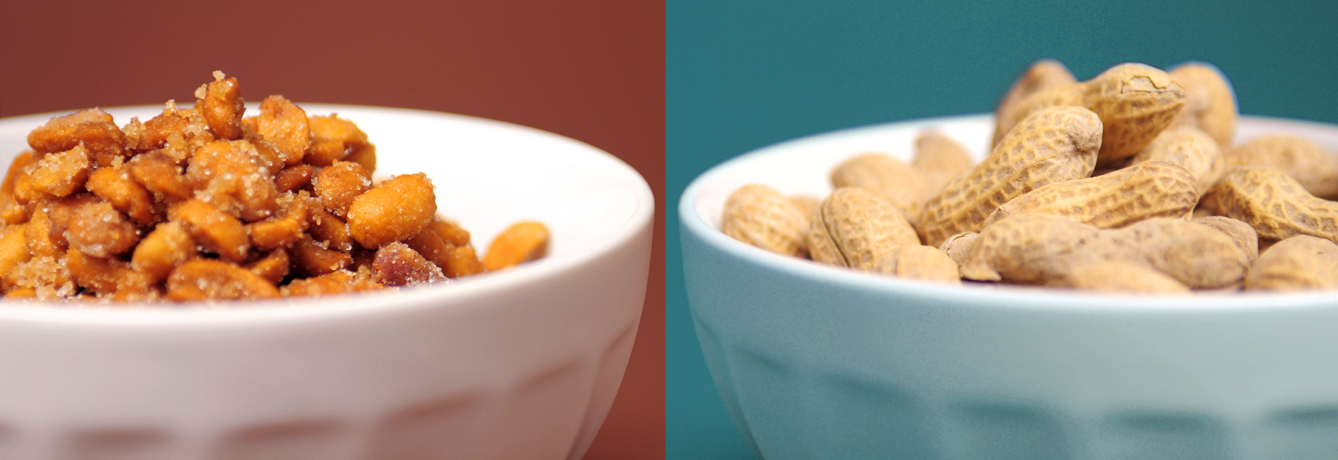To Cook or Not to Cook?

Cooking High Fat Foods May Unlock Extra Calories
No, it’s not a magic trick. Past studies have shown cooking foods high in starch or protein, such as beans or meat, increases energy availability. For the first time, Harvard researchers have looked at the effect of cooking foods high in fat and its effect on caloric availability.
In a 2014 study published in the American Journal of Physical Anthropology, Harvard researchers examined the caloric availability of peanuts, which have 14 grams of fat per ounce. They fed mice a diet of four different preparations of peanuts: raw and whole, raw and blended with a food processor (like “smooth style” peanut butter), roasted and whole, and roasted and blended. Mice were fed each of the four diets for five days, with six days in between each different diet. Energy availability from food was determined by analyzing weight and excretion, adjusting for total food intake and daily activity.
Data analysis showed a diet of whole, roasted peanuts resulted in the greatest increase in body mass, showing cooked peanuts provided more energy from fat compared with raw peanuts. Researchers suggest the cooking process “pre-digests” the peanut oils, making it easier for enzymes to digest the fats once they are eaten. Interestingly, blending peanuts with a food processor did not increase energy gain in this study, but researchers think this has to do with the chewing differences between mice and humans.
These results have important implications for weight loss strategies and public health. First, standard nutritional analysis does not take into consideration the method of cooking – or lack thereof – meaning cooked and raw peanuts or other high-fat foods may actually vary in total caloric content. This is important for people counting calories and trying to lose weight. On the other hand, many parts of the world face the burden of malnutrition. Utilizing roasted rather than raw peanuts could be more efficient in promoting weight gain in malnourished children.
We love peanuts both roasted and raw – the difficulty for most people is determining the proper portion size. For whole peanuts, that’s one ounce, or 28 peanuts. If you’re a peanut butter lover, keep your portion size to two tablespoons, about the size of a ping pong ball. Get the health benefits of peanuts in our recipe for Grilled Celery with Spicy Peanut Sauce, packed with healthy fats and a good source of vitamins E and B6 and an excellent source of vitamin K.
BONUS: Research out of the North Carolina Research Campus found peanut skins, which are packed with polyphenols linked to numerous health benefits, may be beneficial to weight loss. Rats fed the most peanut skin extract gained 21% less weight, while also enjoying 55% lower blood triglycerides and 56% lower VLDL cholesterol (the very worst kind).
Published April 1, 2015
Get Some Fresh Inspiration


